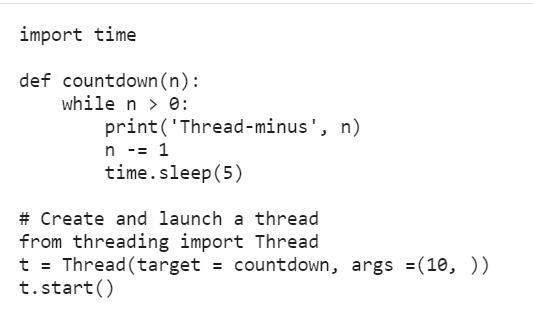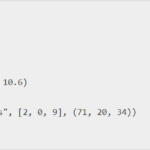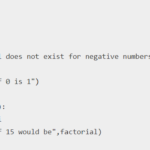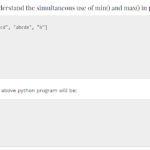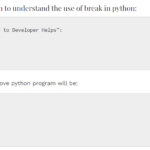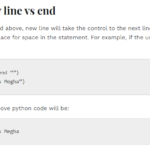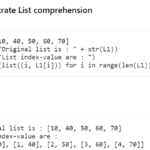Multithreading in Python programming is a well-known technique in which multiple threads in a system share their records space with the principle thread which makes statistics sharing and communique inside threads easy and efficient. Threads are lighter than procedures. Multi threads may execute in my opinion even as sharing their technique assets. The motive of multithreading is to run multiple tasks and function cells at identical times.
Multithreading permits you to break down an application into multiple sub-responsibilities and run those tasks concurrently. In case you use multithreading well, your software speed, performance, and rendering can all be better.
Python supports constructs for both multiprocessing as well as multithreading. in this tutorial, you may basically be that specialize in enforcing multithreaded programs with python. There are predominant modules that user may use to deal with threads in Python:
- The thread module
- The threading module
Python Multithreading Example 1
import time
def countdown(n):
while n > 0:
print('Thread-minus', n)
n -= 1
time.sleep(5)
# Create and launch a thread
from threading import Thread
t = Thread(target = countdown, args =(10, ))
t.start()Output
Thread-minus 10When a thread instance is created, it doesn’t start executing until its start() method is invoked. Threads live in their own system-level thread and fully taken care of by the host operating system. Once started, threads run independently until the target function returns
Multiprocessing in Python is a technique where user can execute parallelism in its truest shape. A couple of techniques are run across more than one CPU core which does now not share the assets amongst them. Each process may have many threads going for walks in its very own memory area. In Python, every method has its own instance of a Python interpreter doing the activity of executing the instructions. Multiprocessing permits you to create packages that could run concurrently (bypassing the GIL) and use everything of your CPU core. Although it is basically special from the threading library, the syntax is pretty comparable. The multiprocessing library offers every technique its own Python interpreter and each their personal GIL.
Python Multithreading Example 2
import threading
def print_cube(num):
print("Cube: {}".format(num * num * num))
def print_square(num):
print("Square: {}".format(num * num))
if __name__ == "__main__":
t1 = threading.Thread(target=print_square, args=(10,))
t2 = threading.Thread(target=print_cube, args=(10,))
t1.start()
t2.start()
t1.join()
t2.join()
print("Successful")Output
Square: 100
Cube: 1000
SuccessfulMultithreading vs Multiprocessing
Multithreading in python allows applications to be responsive. Think you have got a database connection and also you need to reply to consumer enter. Without threading, if the database connection is busy the utility will not be capable of replying to the consumer. By splitting off the database connection into a separate thread you could make the software greater responsive. also due to the fact both threads are in an equal manner, they are able to get entry to the same records structures – true performance, plus a flexible software design.
Be aware that because of the GIL the app isn’t always definitely doing things immediately, but what we have executed is put the useful resource lock at the database into a separate thread in order that CPU time may be switched between it and the user interaction. CPU time receives rationed out among the threads.
The user executes Multiprocessing for instances when they actually do want a couple of things at any given time. Assume your utility desires to connect to 6 databases and perform a complex matrix transformation on every dataset. Putting each task in a separate thread may help a bit due to the fact while one connection is idle some other one should get a few CPU time. However, the processing might no longer happen in parallel because the GIL means that you’re only ever using the resources of one CPU. By way of placing every process in a Multiprocessing procedure, each can run on its very own CPU and run at full efficiency.
The multithreading module provides a very simple and intuitive API for spawning more than one thread in software.

